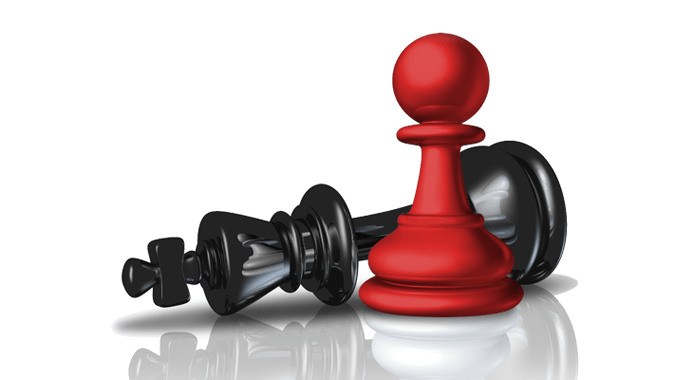Branding vs. Positioning – What’s The Difference?
WHY MARKETERS NEED TO KNOW THIS!
As a practitioner and teacher of brand positioning for more than 35 years, it was just a matter of time before the question “What’s the difference between branding and positioning?” was posed. I was asked this today by a longtime associate who himself is a brilliant strategist and marketing master. So now, allow me please to clarify this from my perspective of more than 3 decades of creating both branding AND positioning and managing digital marketing for really big agencies and even bigger brands.
Sorry in advance for the long post, but this is a really important question, and it deserves a full answer.
First, let’s clarify some grammar (yeah, grammar saves lives):
In grammar, modifiers of a ‘core’ word are called ‘inflections’. Inflections can be applied to nouns, pronouns, verbs and adjectives. Some types of inflections affect number (like making a word plural: ‘dog’ becomes ‘dogs’ with the plural inflection ‘s’), some inflections modify tense (like making a word infer the past: ‘call’ becomes ‘called’ with the tense inflection ‘ed’). One of the more complex inflections modifies verbs to denote the ‘present participle’, such as adding ‘ing’ to the end of the core word… yes, like in ‘branding’, or ‘positioning’.
In the specific case of the core words ‘brand’ and ‘position’ it gets a little more complex because both words can be either a NOUN or an ACTION VERB. Getting all this? There will be a quiz later. Just kidding.
So… on to definitions based on BOTH the noun and verb usage.
A ‘brand’ used as a NOUN, means many things, including a marking, a sword, a tool used to make a mark or stamp, etc., etc. For our purposes we are talking about the noun ‘brand’ to mean ‘a good or class of goods, a service or class of services, identified by a name as being made or provided by a single provider’.
‘Brand’ used as a VERB means ‘to mark with a brand (the noun)’, or in our case ‘to impress indelibly’.
Thus, adding the inflection ‘ing’ to ‘brand’, used as a verb, would mean ‘to actively engage in the process of ‘doing’ a brand (remember this is being used as a verb). So, it would mean ‘to actively engage in the process of impressing something indelibly’.
So, the use of the word ‘branding’ in a marketing sense is actually missing a lot of critical components that would make it a genuinely meaningful term. And hence it has become a very misused and wrongly used term. For example: ‘what is it exactly that you are impressing?’, and ‘where are you impressing it?’. This is where ‘positioning’ comes in.
The core word ‘position’, as a NOUN, means ‘the act of placing or arranging’, ‘a point of view that is held’, ‘a social rank or status’, and more.
As a VERB, the word ‘position’ is transitive, and means ‘to put something in a specific place for a specific purpose’. But we open up a number of questions here, such as ‘what are you putting in that place?’.
Thus, when we modify the core verb ‘position’ with the inflection ‘ing’, we get ‘positioning’.
By using the full phrase ‘brand positioning’, we distinguish this from other types of positioning, such as placing the chairs in specific positions around the dinner table. When we are engaged in marketing discussions, we often shorten the full ‘brand positioning’ to simply ‘positioning’, because we all know we aren’t talking about chairs and dinner tables.
Thus, for me, and for the purpose of this group and marketers in all categories, the following is both a full definition of ‘branding’ and ‘brand positioning’ (or simply ‘positioning’), and how the two differ.
Ready? Here goes:
‘Branding’ is the act of ‘indelibly impressing someone (your audience) with an indelible (rememberable) mark (a symbol or set of symbols) representing your brand (the products or services you provide)’.
We can see that the ‘symbol or set of symbols’ are only representative of your brand (as a noun) and this is why logos, taglines, slogans, styles, etc., are NOT branding. They are just elements of creating the brand’s memorability.
‘Brand positioning’ (or ‘positioning’) is the act of ‘putting a brand (the noun) in its proper place (the mind of your target audience) such that it accomplishes the specific purpose of influencing, modifying and controlling the way your target audience believes, and thus behaves, towards your brand’.
It follows then that ‘de-positioning’ would be the act of ‘putting a brand (the noun) or brands (your competitors) in its proper place (the mind of your target audience) such that it accomplishes the specific purpose of influencing, modifying and controlling the way your target audience believes, and thus behaves, away from your competition’.
And this is why the art and science of brand positioning is so powerful when it’s done right (combining positioning in FAVOR of your brand and de-positioning AWAY from your competitors).
In the final analysis, ‘branding’ is only a partial step; if your brand conveys something negative in the mind of your target consumers, your logo (for example) only serves to remind them that they don’t like you. Positioning, on the other hand, is a complete and nutritious marketing meal, in that it conveys all the positive aspects of your meaningful benefit (read my free PDF White Paper – The Positioning Matrix™), and simultaneously conveys all the reasons your competitors cannot fulfill your targets’ needs or pain points the way ONLY your brand can.
And then it’s game over for the competition.

